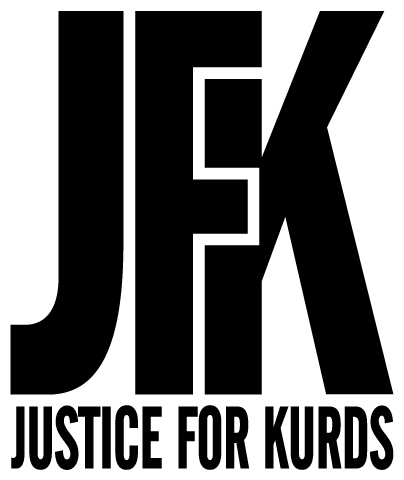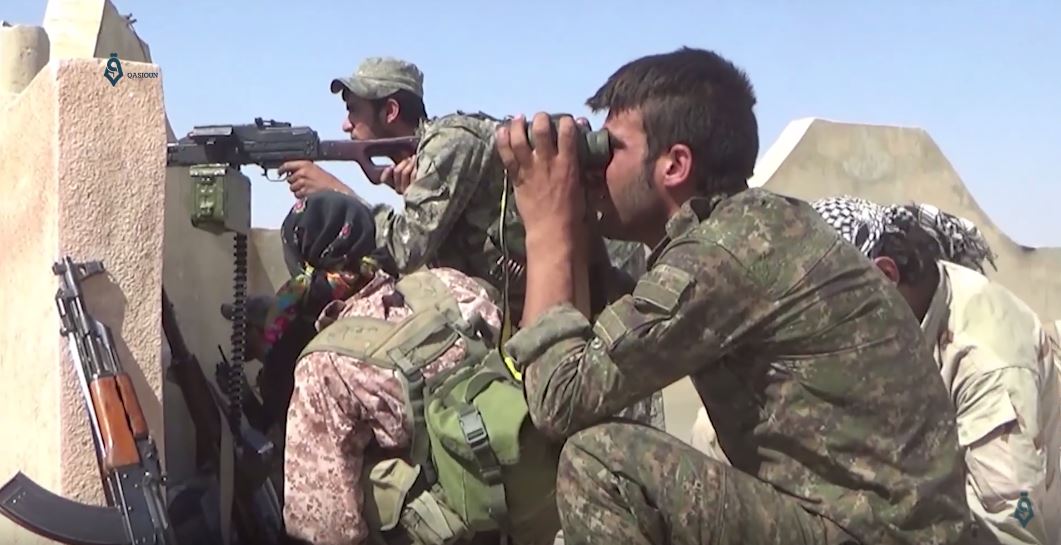WASHINGTON — A stalled American-backed ground offensive to wipe out the last pockets of Islamic State militants in eastern Syria has been reignited over the past month with the return of top Kurdish commanders.
The mission against the Islamic State also has been invigorated by a surge in French commandos, the arrival of Navy fighter jets and some secret sleuthing by Iraqi spies.
But the campaign may have only little more than six months to hunt down the few hundred fighters — not enough time to extinguish a threat that is quickly moving underground.
The new momentum remains imperiled by President Trump’s on-again, off-again threat to withdraw some 2,000 American troops in Syria, including hundreds of Special Operations advisers and commandos.
A force of allied Kurds and Arabs in Syria’s east has served as the United States’ most effective battleground ally against the Islamic State, also known as ISIS. But a spate of Turkish attacks last winter against other Kurds, in northwest Syria, prompted the Kurdish fighters to peel away from the American-led assault near the Iraqi border.
Their absence allowed the remaining Islamic State militants to claw back territory and renew guerrilla attacks from hide-outs across the country. Trump administration officials said Defense Secretary Jim Mattis and top American commanders now have been given at least six months to stamp out the Islamic State in Syria’s east.
“The Islamic State has now shifted to guerrilla operations, increasing the likelihood that it will continue to operate in eastern Syria and western Iraq for years,” said Seth G. Jones, the director of the Transnational Threats Project at the Center for Strategic and International Studies in Washington.
Since the fall of Raqqa, the Islamic State’s self-proclaimed capital, late last year, allied warplanes have relied mainly on Syrian Kurdish militia to kill remaining insurgents, flush them out of their hide-outs and fortified fighting positions, or pinpoint their locations. That served up targets for allied fighter-bombers.
But those militia fighters and their commanders started leaving eastern Syria in late January to defend other Kurds against Turkish attacks.
The Kurdish-led Syrian Democratic Forces were the mainstay in routing the Islamic State from Raqqa and chasing insurgents fleeing south along the Euphrates River Valley to the Iraqi border. Without them, the remaining, less capable Syrian Arab militias struggled to contain the few hundred fighters that were left in two main pockets.
“Even if we take down these two pieces of real estate, there’s still a threat,” Representative Don Bacon, a Nebraska Republican and retired Air Force general who served in Iraq, said at a recent hearing of the House Homeland Security Committee. “They could reassert themselves at any point.”
That standoff began to shift after the Syrian Democratic Forces announced a new ground offensive on May 1, called Operation Roundup.
Backed by American-led air power, the allied Syrian militias in the past three weeks have cleared Islamic State fighters near the Iraqi-Syrian border, military officials said. American warplanes have attacked Islamic State bunkers and command posts, killed operatives, destroyed buildings and equipment, and disrupted supply routes, they said.
In the meantime, Kurdish-led forces in northern Syria on Thursday announced the capture of the French jihadist Adrien Guihal, known as the voice that claimed 2016 attacks in France for the Islamic State.
Fighting has been fierce in a 15-mile swath of the Euphrates River Valley. “Daesh has been using civilians as human shields preventing them from leaving, so it has been hard for us to call coalition airstrikes,” Sherko Hasske, a senior Kurdish commander in charge of the ground operation, said in a WhatsApp interview, using another name for the Islamic State.
The timing of the renewed campaign hinged on several factors, including an increasing sense of urgency that the fight was mired down at a pivotal time on the battlefield and as Mr. Trump’s ire toward American military entanglements in Syria boiled over.
Several Kurdish commanders, who provide battlefield leadership and coordination, returned from the failed fight against the Turks in the northwest. American air commanders, aided by the arrival of fighter jets from the carrier Harry S. Truman in the eastern Mediterranean Sea, ramped up strikes against Islamic State targets, to 44 in the week ending May 24, from only three in the week ending April 5.
Iraqi warplanes have also carried out several cross-border strikes against Islamic State targets in Syria in the past few weeks. At the same time, Iraqi spies have infiltrated Islamic State fighter cells in Syria, a senior Iraqi official said, relaying information back to Iraqi forces who have stiffened defenses and coordinated efforts with Syrian militias along a 30-mile stretch of the Iraq-Syria border.
“They sealed the border with Syria with very highly trained border guards, preventing ISIS terrorists from fleeing the battlefields,” Brig. Gen. Roberto Vannacci of Italy, a deputy commander of the American-led military coalition in Iraq and Syria, told reporters at the Pentagon last week.
In Senate testimony last month, Mr. Mattis telegraphed the impending offensive involving Syrian Kurds and Arabs, Iraqis and other Western allies. “You’ll see a re-energized effort,” Mr. Mattis told the Armed Services Committee on April 26. “You’ll see increased operations on the Iraq side of the border. And the French have just reinforced us in Syria with special forces, here, in the last two weeks.”
American and Western intelligence and counterterrorism officials also say the Islamic State’s defeat on the ground in Syria and Iraq, and a growing shadow war against the group’s branches in West Africa to Afghanistan, has failed to stifle its ability to mobilize a potent global following through social media.
“ISIS’s online messaging has multiple themes, and if battlefield losses force the group to shift away from messages emphasizing the holding of territory, the group can pivot toward its claim to victimhood,” Joshua A. Geltzer, a former senior director for counterterrorism at the National Security Council in the Obama administration, said in congressional testimony last week.
The shifting tactics come at a time when the Islamic State has been able to reclaim some territory, particularly west of the Euphrates River, in area controlled by the Syrian army and its Russian military patrons. Islamic State fighters have conducted more attacks on the western side of the Euphrates against forces aligned with the government of President Bashar al-Assad, American and other western analysts said.
This past weekend, at least four Russian soldiers working with Syrian army troops were killed and five others wounded in a nighttime attack by Islamic State fighters in eastern Deir al-Zour province.
“We remain concerned that the Syrian regime is either unwilling or unable to deal with that threat,” Maj. Gen. Felix Gedney of Britain, another deputy commander of the allied operations in Iraq and Syria, told the BBC last week.
Even if the last militant holdouts are captured or killed, American officials and analysts acknowledged that a plan to ensure security and stability in the region remains elusive.
“What is the U.S.’s political approach in eastern Syria, including around the Middle Euphrates River Valley? Who will govern these areas?” said Mr. Jones of the strategic studies center. “These questions are critical since successful counterterrorism and counterinsurgency campaigns have always required strong, competent governments. Weak, failed states are not a recipe for success.”
Margaret Coker contributed reporting from Baghdad, Karam Shoumali from Berlin and Gardiner Harris from Washington.

